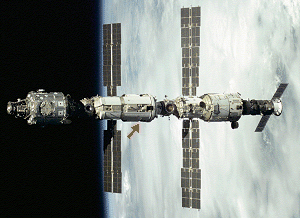Key Takeaways:
International Space Station: 5 years as a host
This week, the International Space Station (ISS) celebrates 5 continuous years as an astronaut hotel. While this anniversary is noteworthy, this is only the beginning for the space station. ISS will continue to develop and serve other space missions.
Since the first crew arrived in November 2000, 16 nations have contributed to the orbiting laboratory, and the station’s size has grown from an efficiency apartment to a three-bedroom house.
Other than NASA, the ISS partnership includes the Russian Federal Space Agency, Canadian Space Agency, European Space Agency, and Japan Aerospace Exploration Agency. — Jeremy McGovern
One day before Mars made its closet approach to Earth since August 2003, the Hubble Space Telescope (HST) imaged a dust storm on the Red Planet.
The storm intensified over the weeks leading up to October 28. In the HST image, the storm is nearly 930 miles (1,500 kilometers) long, measured diagonally — which is about the size of Texas, Oklahoma, and New Mexico combined. The region is so prominent that amateur astronomers were able to resolve it easily with backyard telescopes.
While the dust storm has made observers giddy, those in charge of the Mars rover Opportunity are concerned. Because the storm is in close proximity to the rover, dust and debris kicked up by the high winds could block sunlight necessary to power the spacecraft. — Jeremy McGovern











